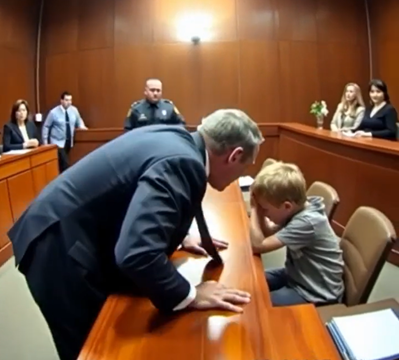In a chilling reminder of the risks of keeping wild animals in captivity, two tragedies involving killer whales shocked the world and forever changed the way people view marine entertainment. Killer whales, or orcas, have long been admired for their intelligence, beauty, and cooperative nature with trainers in amusement parks, yet the deaths of two skilled professionals—Alexis Martínez in Spain in 2009 and Dawn Brancheau in Florida in 2010—revealed the darker side of this practice.

Both Martínez and Brancheau were respected, experienced trainers who loved their work, yet they fell victim to the sudden and inexplicable aggression of the very animals they nurtured and trusted. These incidents, involving Keto at Loro Parque and Tilikum at SeaWorld, raised haunting questions about the psychological toll of captivity on orcas and whether such powerful creatures should be forced to live their lives in tanks far from the ocean they were meant to roam. On Christmas Eve in 2009, a seemingly ordinary training session at Loro Parque in Tenerife ended in tragedy when Keto, a 14-year-old orca born in captivity, turned on his trainer, 29-year-old Alexis Martínez.
Keto had spent his entire life in amusement parks, performing tricks in San Diego, Ohio, and Texas before being transferred to Spain. He had never once experienced the open ocean, living instead in confined pools where his primary purpose was to entertain. Keto was a star attraction, having fathered multiple calves in captivity and delighting visitors with his shows. On that day, however, witnesses observed him acting unusually. Though initially performing imprecisely, he seemed to settle down, floating calmly beside Martínez. But the calm was deceptive. A staff member later recalled that Keto appeared to deliberately lure his trainer into the water, and in a horrifying sequence, dragged him to the bottom of the pool.
Despite efforts by another trainer to intervene, Keto ignored control devices and attacked repeatedly before releasing Martínez’s lifeless body. The autopsy revealed catastrophic injuries, including internal bleeding, lacerations to vital organs, and bite marks. The park was left in shock, as Keto had been described as cooperative, yet his sudden violence remained unexplained. Just two months later, tragedy struck again, this time at SeaWorld in Orlando, Florida. On February 24, 2010, senior trainer Dawn Brancheau, a beloved figure with over 15 years at the park, was killed during a performance by Tilikum, one of the largest orcas ever kept in captivity. Brancheau had a degree in psychology and animal behavior, and she was known for her close bond with Tilikum, a whale who had lived in tanks for more than 30 years after being captured in 1983.
She was a star in SeaWorld’s promotional materials and a role model for aspiring trainers, yet her deep understanding of orcas could not protect her. During the show, Tilikum suddenly grabbed her and pulled her into the water. What followed horrified onlookers: he drowned her, inflicted severe injuries including broken ribs, spinal damage, and bite wounds, and refused for 45 minutes to release her body. Trainers tried food, nets, and distractions to no avail. Tilikum was eventually confined to a private pool, never performing publicly again, and remained there until his death in 2017. Brancheau’s death devastated her colleagues, many of whom had admired her bond with Tilikum, and forced the public to confront whether orcas could ever truly be safe in captivity. The lives of Keto and Tilikum highlight the vast difference between life in the wild and life in a tank.
In their natural environment, orcas travel great distances, hunt cooperatively, and live in complex family groups, often surviving for 50 to 90 years. In captivity, however, they are confined to limited spaces, fed diets lacking in variety, and forced to perform repetitive tricks for food. Keto never knew the ocean, while Tilikum endured over three decades in pools, fathering calves for breeding programs but living a life far from natural. Both orcas died young by wild standards, and experts suggest that the stress, isolation, and lack of stimulation in captivity contributed to their psychological decline and unpredictable aggression. Documentaries like Blackfish, released in 2013, exposed the harsh realities of orca captivity, sparking public outrage and pressuring companies like SeaWorld to change.
While the exact reasons for Keto and Tilikum’s violent outbursts will never be fully understood, many believe confinement stripped them of their natural instincts and left them emotionally unstable. The tragedies also revealed the vulnerability of even the most experienced trainers. Martínez and Brancheau were highly skilled professionals who loved their work and understood the risks, yet their dedication could not prevent the unpredictability of massive predators confined to unnatural conditions. Their stories inspired sympathy but also deep criticism of the amusement park industry, as people questioned whether the entertainment value was worth the danger to both humans and whales.
In the aftermath, changes were made. SeaWorld announced in 2016 that it would end its orca breeding program and phase out theatrical shows, though it continues to house orcas. Loro Parque still keeps orcas, including Keto, and faces ongoing criticism from animal rights groups demanding their release to sanctuaries. These tragedies fueled an ongoing debate over the ethics of keeping intelligent, social animals in captivity. While some argue that marine parks serve educational purposes, many believe orcas should no longer be confined for entertainment. The deaths of Martínez and Brancheau serve as haunting reminders of the risks inherent in these practices, leaving behind a legacy of reform, reflection, and unresolved questions about the balance between human entertainment and animal welfare.





